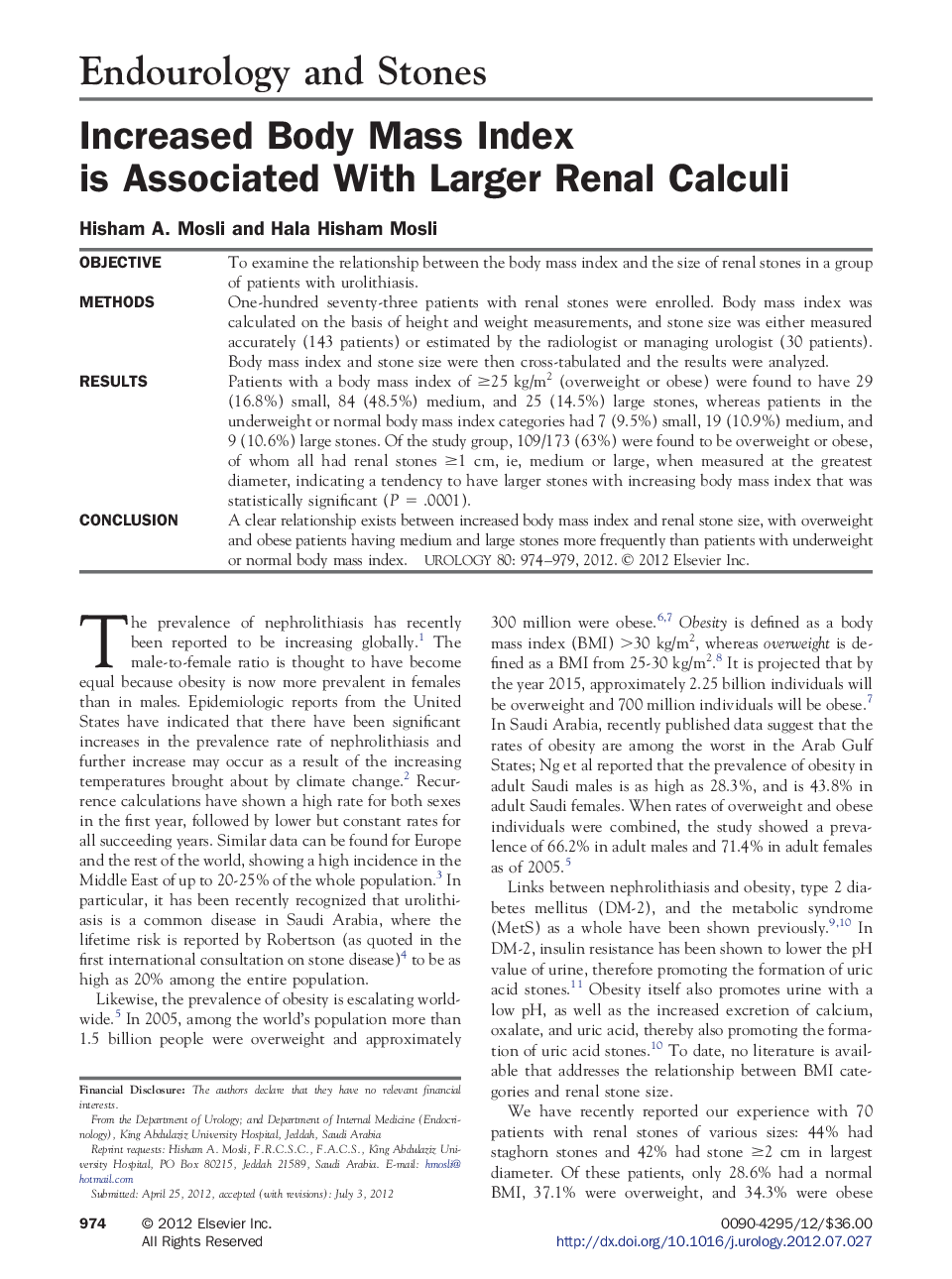| کد مقاله | کد نشریه | سال انتشار | مقاله انگلیسی | نسخه تمام متن |
|---|---|---|---|---|
| 6168179 | 1250338 | 2012 | 6 صفحه PDF | دانلود رایگان |

ObjectiveTo examine the relationship between the body mass index and the size of renal stones in a group of patients with urolithiasis.MethodsOne-hundred seventy-three patients with renal stones were enrolled. Body mass index was calculated on the basis of height and weight measurements, and stone size was either measured accurately (143 patients) or estimated by the radiologist or managing urologist (30 patients). Body mass index and stone size were then cross-tabulated and the results were analyzed.ResultsPatients with a body mass index of â¥25 kg/m2 (overweight or obese) were found to have 29 (16.8%) small, 84 (48.5%) medium, and 25 (14.5%) large stones, whereas patients in the underweight or normal body mass index categories had 7 (9.5%) small, 19 (10.9%) medium, and 9 (10.6%) large stones. Of the study group, 109/173 (63%) were found to be overweight or obese, of whom all had renal stones â¥1 cm, ie, medium or large, when measured at the greatest diameter, indicating a tendency to have larger stones with increasing body mass index that was statistically significant (P = .0001).ConclusionA clear relationship exists between increased body mass index and renal stone size, with overweight and obese patients having medium and large stones more frequently than patients with underweight or normal body mass index.
Journal: Urology - Volume 80, Issue 5, November 2012, Pages 974-979